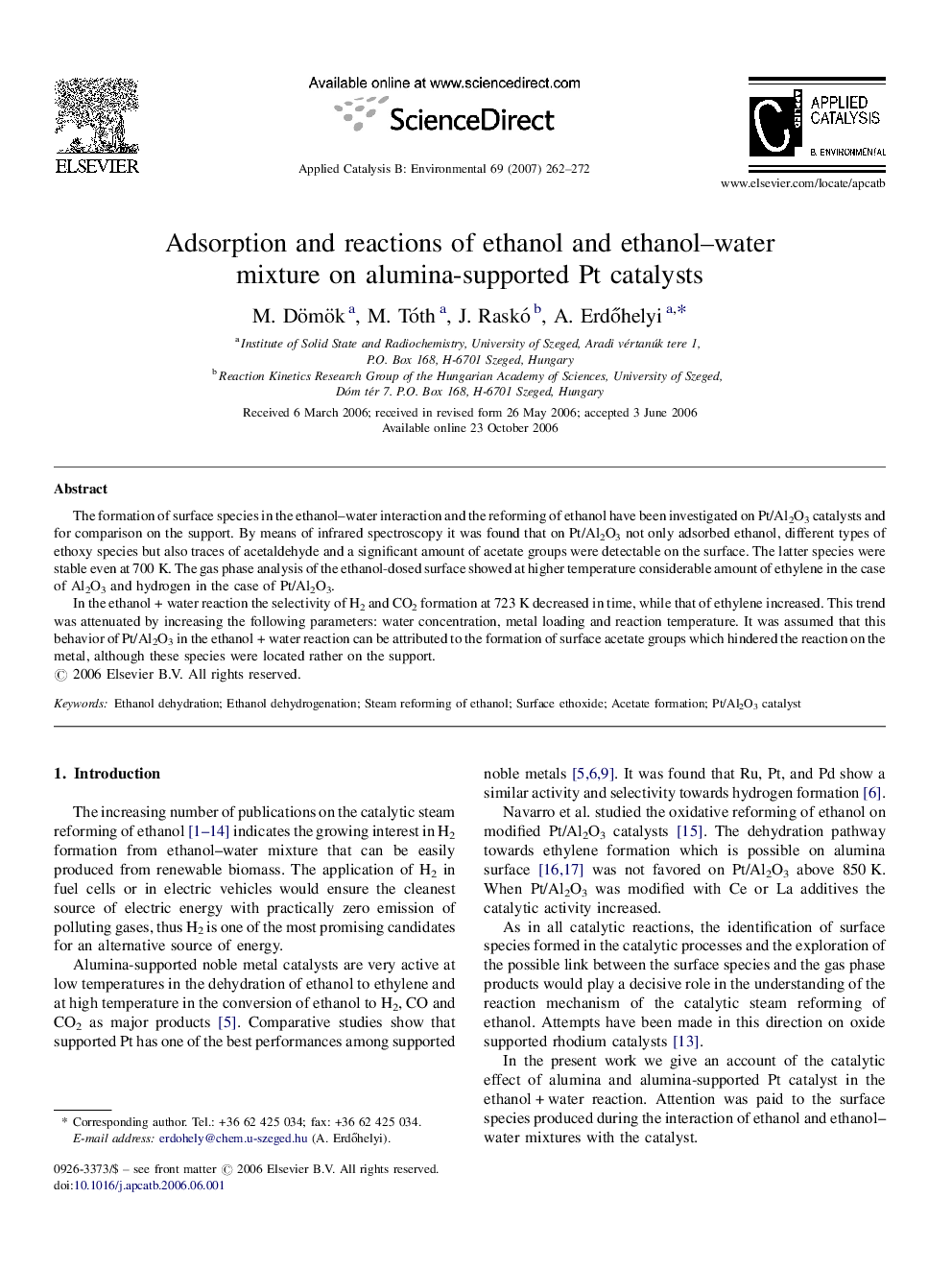| Article ID | Journal | Published Year | Pages | File Type |
|---|---|---|---|---|
| 48626 | Applied Catalysis B: Environmental | 2007 | 11 Pages |
The formation of surface species in the ethanol–water interaction and the reforming of ethanol have been investigated on Pt/Al2O3 catalysts and for comparison on the support. By means of infrared spectroscopy it was found that on Pt/Al2O3 not only adsorbed ethanol, different types of ethoxy species but also traces of acetaldehyde and a significant amount of acetate groups were detectable on the surface. The latter species were stable even at 700 K. The gas phase analysis of the ethanol-dosed surface showed at higher temperature considerable amount of ethylene in the case of Al2O3 and hydrogen in the case of Pt/Al2O3.In the ethanol + water reaction the selectivity of H2 and CO2 formation at 723 K decreased in time, while that of ethylene increased. This trend was attenuated by increasing the following parameters: water concentration, metal loading and reaction temperature. It was assumed that this behavior of Pt/Al2O3 in the ethanol + water reaction can be attributed to the formation of surface acetate groups which hindered the reaction on the metal, although these species were located rather on the support.
